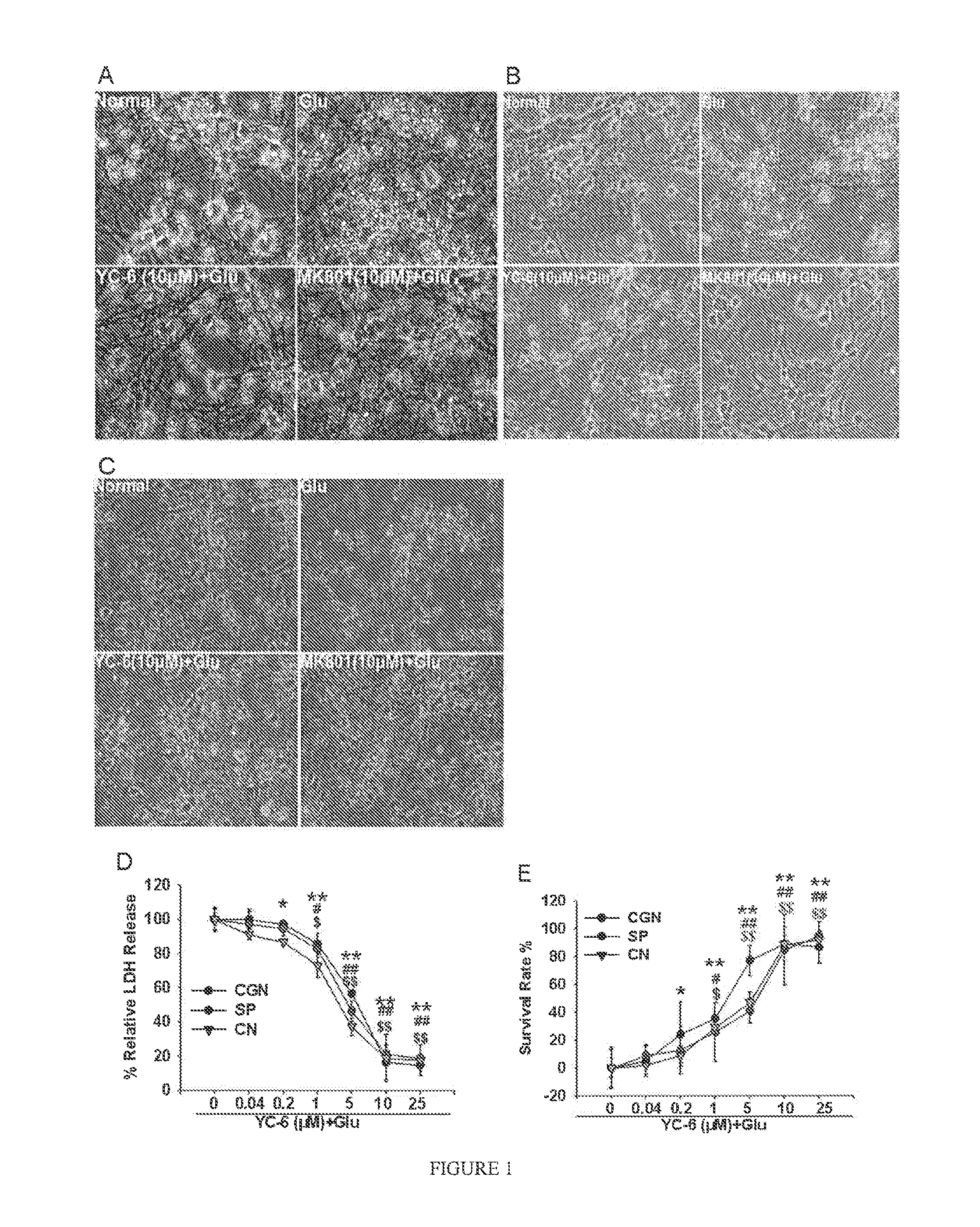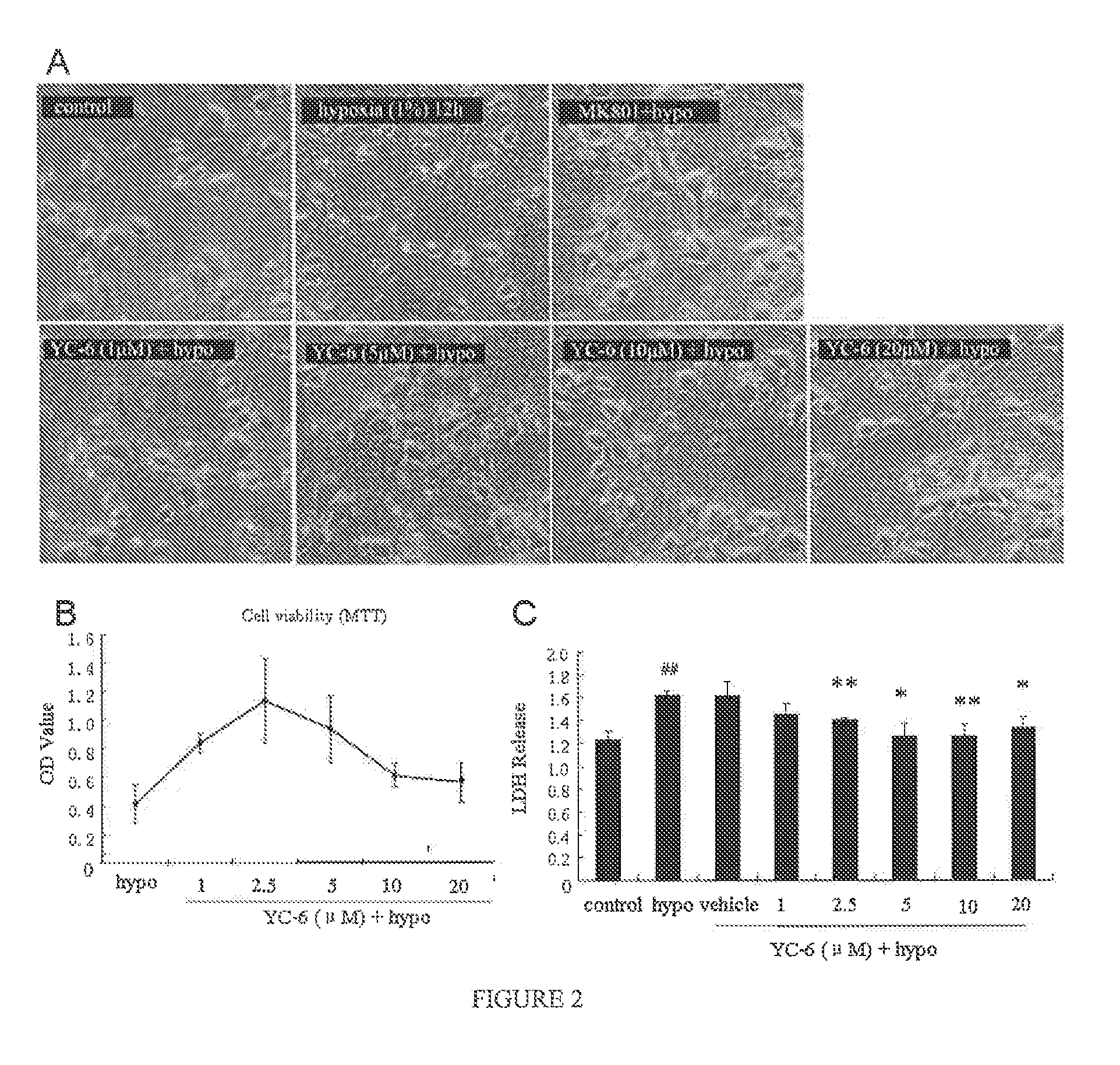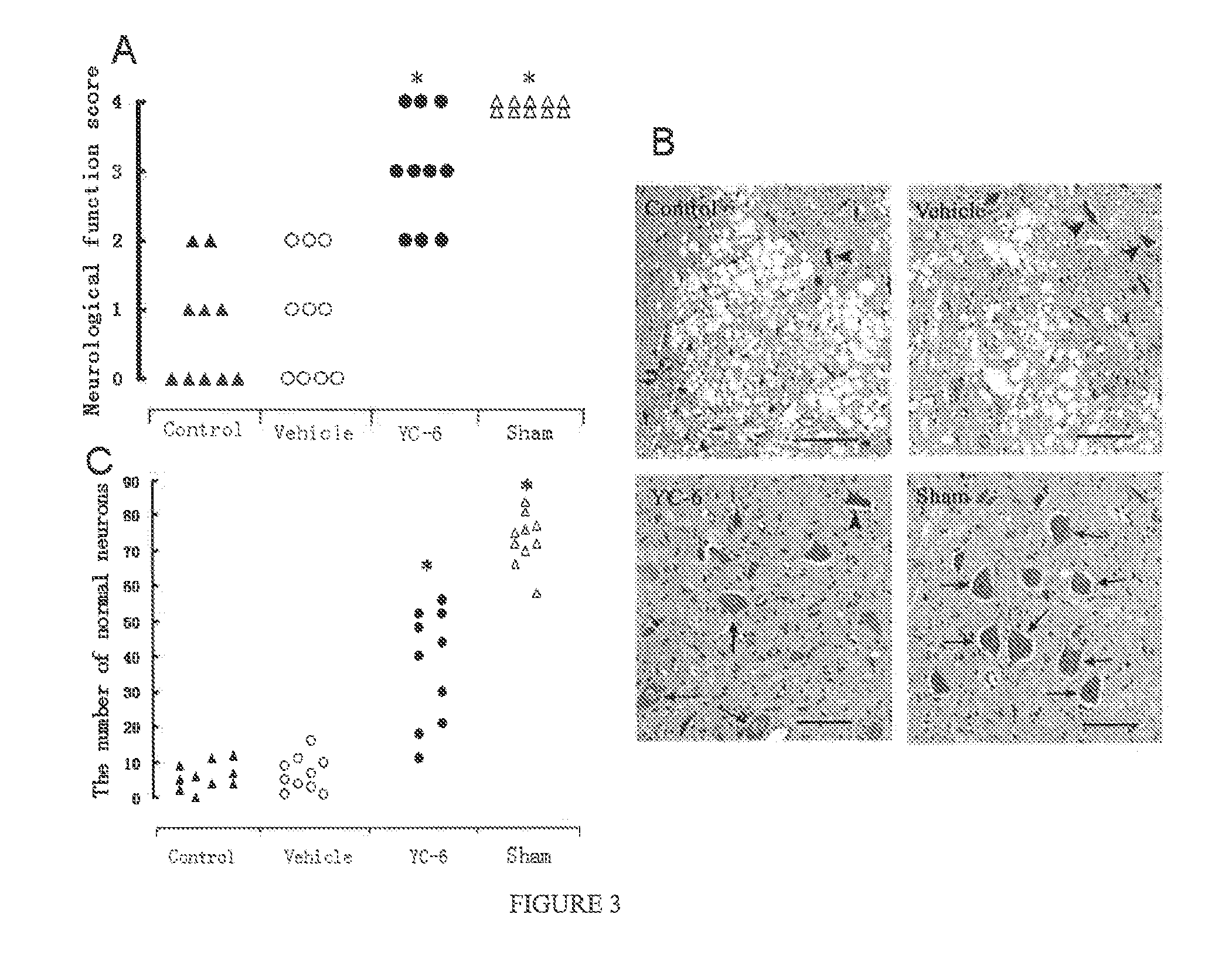Use of 5.alpha.-androstane (alkyl)-3.beta.,5,6.beta.-triol in preparation of neuroprotective drugs
a technology of alpha-androstane and triol, which is applied in the field of new medical use of alpha-androstane (alkyl)3 . beta, 5, 6 . beta triol in preparation of neuroprotective drugs, can solve the problems of no neuroprotective effect, and achieve the effects of reducing the release of lactate dehydrogenase, reducing the release of glutamate-induced excitotoxic damage, and inhibiting glutamate-induced
- Summary
- Abstract
- Description
- Claims
- Application Information
AI Technical Summary
Benefits of technology
Problems solved by technology
Method used
Image
Examples
example 1
Culture of Primary Neurons
1. Primary Rat Cerebellar Granule Neurons Cultures
[0019]Cerebella with meninges and blood vessels removed were obtained from 7˜8 days old rats weighted 15˜20 g. 0.05 g / L DNase I was used to pipette the cell to single cell suspension following 0.25 g / L trypsin digestion. The suspension was then centrifuged to collect precipitation and resuspended with BME medium containing 10% (v / v) FBS and 25 mM KCl. The cells were then seeded on dishes pre-coated with poly-lysine. 24 hours following the seeding, 10 μM Ara-C was added to inhibit growth and proliferation of non-neuron cells, such that the cerebellar granule neurons have purity not less than 95%. Glucose was added during culture to provide supplementary energy for cellular metabolism. Experiments were carried out at 8 DIV.
2. Rat Spinal Motor Neurons
[0020]Spinal cord was obtained from 15-day pregnant SD rats. The cristae membrane and blood film were removed. The spinal cord tissues of fetal rats is digested wi...
example 2
Protective Effect of YC-6 on Primarily Cultured Neurons
1. Protective Effect of YC-6 Against Glutamate-Induced Excitotoxicity of Cerebellar Granule Neurons
[0022]The cerebellar granule neurons cultured for 8 days were divided into four groups: control group, glutamate group, MK801+glutamate group, and YC-6+glutamate group. The control group received no treatment. The glutamate group was treated with 200 μM glutamate. The MK801 group and the YC-6 group were pre-treated with MK801 (10 μM) and YC-6 with different concentrations, respectively, followed by incubation at 37° C. for 30 minutes, then glutamate was added. After 24 hours, phase contrast microscope was used to observe neuronal morphologies. The cells were stained by FDA and observed under inverted fluorescent microscope for cell counting to calculate survival rate of neurons. The activity of lactate dehydrogenase(LDH) was also determined for each group.
Survival Rate=Number of live cells for each group / Number of live cells in the...
example 3
Neuroprotective Effect of YC-6 Against Rabbit Spinal Cord Ischemia Induced by Abdominal Aorta Block
[0033]40 male New Zealand white rabbits were grouped into 4 groups (n=10): Control group for establishing rabbit spinal cord ischemia model: YC-6 group, with 2 mg·Kg−1 steroid YC-6 intravenously injected via rabbit ear marginal vein 30 min prior to spinal cord ischemia; Vehicle group, with equivalent capacity of hydroxypropyl cyclodextrins (1 ml·Kg−1) injected in the same way 30 min prior to spinal cord ischemia; Sham group, with only abdominal aorta exposure but no blockage.
[0034]The establishment process of rabbit spinal cord ischemia model was performed according to references [3] and [4] and our previous report [5]. [3] Celik M. et al. Erythropoietin prevents motor neuron apopotosis and neurologic disability in experimental spinal cord ischemic injury. Proc Natl Acad Sci USA, 2002, 99: 2258-2263. [4] Johnson S H, Kraimer J. M., Graeber G. M. Effects of flunarizine on neurological r...
PUM
| Property | Measurement | Unit |
|---|---|---|
| infarct size | aaaaa | aaaaa |
| concentration | aaaaa | aaaaa |
| phase contrast microscope | aaaaa | aaaaa |
Abstract
Description
Claims
Application Information
 Login to View More
Login to View More - R&D
- Intellectual Property
- Life Sciences
- Materials
- Tech Scout
- Unparalleled Data Quality
- Higher Quality Content
- 60% Fewer Hallucinations
Browse by: Latest US Patents, China's latest patents, Technical Efficacy Thesaurus, Application Domain, Technology Topic, Popular Technical Reports.
© 2025 PatSnap. All rights reserved.Legal|Privacy policy|Modern Slavery Act Transparency Statement|Sitemap|About US| Contact US: help@patsnap.com



